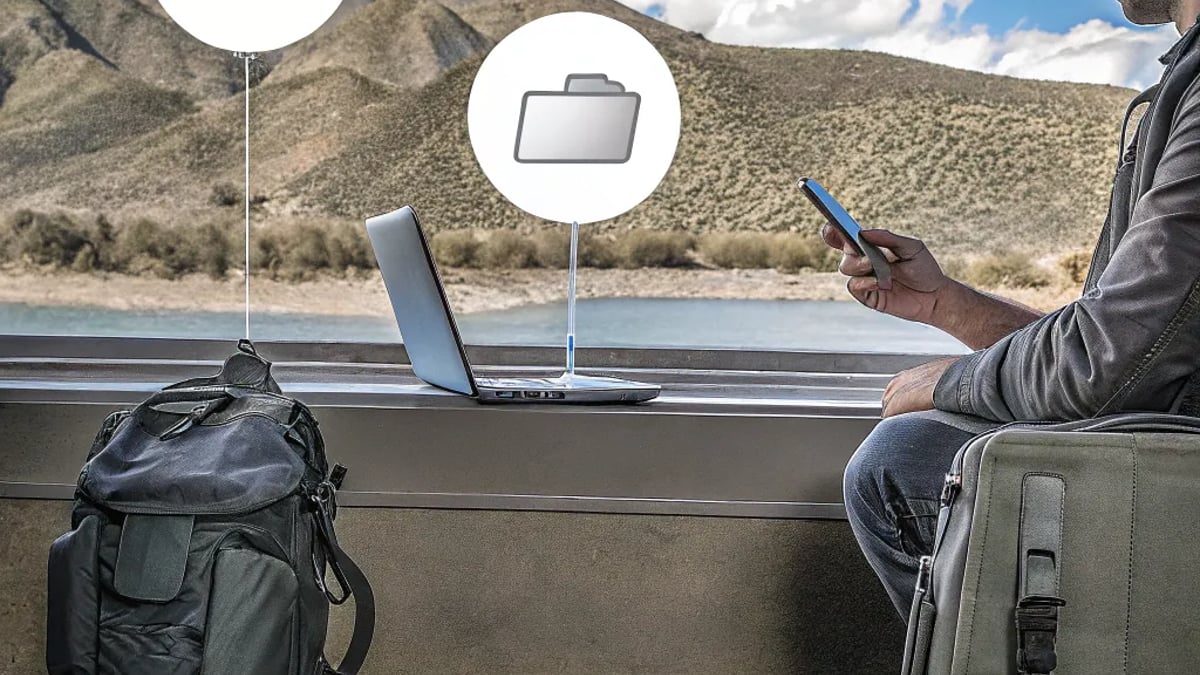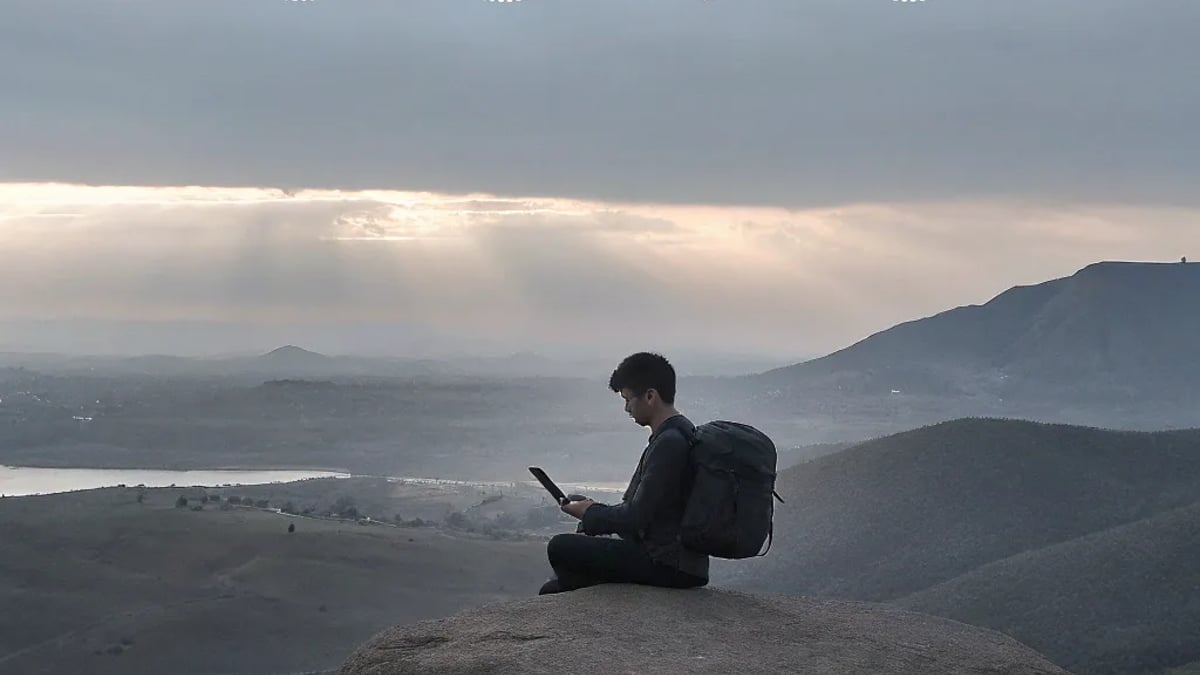
When you're exploring the world with just a backpack and minimal tech, managing your digital assets becomes a genuine challenge. From capturing breathtaking landscapes to documenting cultural experiences, travelers generate countless photos, videos, and documents that need secure storage without weighing them down with extra hardware.
Why Cloud Storage Matters for Modern Travelers
Remember the days of carrying multiple memory cards and portable hard drives? I certainly do—and I don't miss frantically searching through my bag for that one SD card with yesterday's sunset photos. Cloud storage has revolutionized how we travel, especially for those embracing the minimalist approach.
The beauty of cloud solutions lies in their accessibility. Whether you're using a smartphone in Morocco, borrowing a computer in a Bangkok hostel, or working from your tablet in a Parisian café, your files remain just a login away.
The Device Limitation Challenge

Many travelers face a common dilemma: they want to travel light with just a phone or tablet, but still need to manage substantial amounts of data. As one Reddit user in the r/onebag community noted, "I do very little computer editing during the trip. But I use VideoShop Pro..." highlighting how even with limited devices, creative work continues on the road.
This balancing act becomes particularly tricky for:
- Photographers capturing RAW images
- Content creators shooting 4K video
- Digital nomads managing work documents
- Writers documenting their experiences
Top Cloud Storage Solutions for Device-Limited Travelers
Google Photos: The Traveler's Reliable Companion
Google Photos remains a frontrunner for travelers primarily using smartphones. While no longer offering unlimited storage, its features specifically benefit those on the move:
- Automatic backup when connected to WiFi
- Intelligent search capabilities (find that beach photo without scrolling endlessly)
- Basic editing tools accessible from any device
- Offline access to selected albums

The free 15GB might run out quickly for serious photographers, but Google One plans start at reasonable prices for additional storage. I've personally relied on Google Photos during a three-month backpacking trip through Southeast Asia, and the peace of mind was worth every penny of the $1.99/month for 100GB.
Adobe Creative Cloud: For the Visual Storyteller
For photographers and videographers, Adobe's ecosystem offers specialized solutions beyond simple storage. As mentioned on SnapsByFox.com, Adobe Lightroom provides an excellent iPad photography workflow where "the library is synced across all devices and backed up in the cloud."
Adobe Creative Cloud offers:
- 20GB-1TB storage options depending on your subscription
- Seamless integration with Lightroom and Photoshop
- Mobile editing capabilities on professional-grade apps
- Selective syncing to manage limited device storage
The subscription cost is higher than general storage solutions, but for those editing on the go, the integrated workflow justifies the expense.
Amazon Photos: Unlimited for Prime Members

Amazon Photos flies under the radar for many travelers, but Prime members receive unlimited full-resolution photo storage and 5GB for videos—a substantial benefit for photographers.
However, as one Reddit user pointed out in r/AskPhotography, "The one problem with Amazon is that if you want to download all of your photos you're limited to 3,000 at a time." This limitation might frustrate those needing to download entire collections, but for ongoing backup while traveling, it's a minor inconvenience.
pCloud: One-Time Payment Option
Subscription fatigue is real, especially for long-term travelers managing multiple monthly expenses. pCloud stands out by offering lifetime plans with a one-time payment.
Key benefits include:
- Available lifetime plans (currently 500GB-2TB)
- Client-side encryption options
- No bandwidth limitations
- Automatic camera roll backup
I switched to pCloud last year before an extended trip, and not worrying about another monthly payment while traveling has been refreshing. The upfront cost seemed steep initially, but it's already paid for itself compared to ongoing subscriptions.
How Do You Choose the Right Cloud Storage for Travel?
Selecting the ideal cloud solution depends on your specific travel style and needs:
Consider Your Primary Device
If you're primarily using an iPad, solutions with strong iOS apps like iCloud or Adobe Creative Cloud might work best. Android users might prefer Google's ecosystem for deeper integration.
The Freewrite Traveler, a specialized writing device, mentions it's "continually saving your writing locally to the device AND to the cloud," showing how even dedicated devices now incorporate cloud backup as an essential feature.
Evaluate Your Connection Situation
Not all destinations offer reliable WiFi. When traveling through regions with spotty connectivity:
- Look for solutions with robust offline capabilities
- Consider services with selective sync to manage limited bandwidth
- Check if the service offers mail-in backup options for large initial uploads
During a trip through rural Mongolia last summer, I learned the hard way that automatic cloud backup settings can drain your battery when constantly searching for networks. Adjusting to manual backups when reaching major towns saved significant power.
Security Considerations for International Travelers
Border crossings introduce additional digital security concerns. The Electronic Frontier Foundation notes in their border privacy guide that travelers should consider "online backup that can be accessed during your travel" and various "cloud storage tools" as part of a security strategy.
When crossing borders with sensitive information:
- Services with zero-knowledge encryption provide additional protection
- Consider temporarily removing apps with sensitive data
- Use services that allow selective downloading rather than keeping everything on your device
What About Hybrid Solutions?
Combining Cloud and Physical Storage
Sometimes the best approach combines methods. As mentioned in the r/onebag discussion, "A better solution would probably be cloud and either computer or SSD."
For photographers or videographers creating large files, this hybrid approach works well:
- Use a small portable SSD (like the Samsung T7) for immediate backup
- Upload selectively to cloud storage when good WiFi is available
- Keep only current projects on your device
Creating Your Own Cloud with NAS Systems
For frequent travelers who return to a home base, a Network Attached Storage (NAS) system like Synology or QNAP can create your personal cloud. This allows:
- Remote access to all your files from anywhere
- Complete control over your data
- No ongoing subscription costs
- Automatic backup when you return home
The initial setup requires technical comfort, but the long-term benefits for regular travelers can be substantial.
How Do You Manage Limited Device Storage While Traveling?
The ultimate challenge for device-limited travelers is managing local storage while waiting for cloud uploads. Some practical approaches:
- Use microSD expansion where available (increasingly rare in newer devices)
- Adopt a disciplined "import-upload-delete" workflow after each shooting session
- Invest in a device with larger base storage rather than the minimum configuration
- Learn to edit and cull "in-camera" before importing to your primary device
I've found that spending 10 minutes each evening reviewing and deleting unnecessary photos saves countless headaches with storage management later.
What's Your Backup Strategy?
Whatever cloud solution you choose, remember the photographer's backup rule: if it doesn't exist in three places, it doesn't exist at all. For travelers, this might mean:
- Original copy on your device
- Cloud storage backup
- Secondary cloud service or physical storage
The peace of mind from knowing your memories are safe makes any storage solution worth the investment.
What cloud storage solutions have worked best in your travels? The perfect system often combines several approaches tailored to your specific needs, devices, and destinations.
Tags

About Elliot Navarro the Author
Elliot Navarro is a seasoned travel writer who has spent over a decade delving into the heart of diverse cultures across five continents. His expertise lies in embedding himself within local communities to truly experience the vibrant tapestry of languages, traditions, and lifestyles that define them.
Recommended Articles
One Supplement That Helped Me With Energy Throughout the Day
Discover how creatine can boost your daily energy levels, enhance muscle recovery, and improve overall cognitive function.
The Shower Chair People Say Feels Safer and More Stable
Discover the best shower chairs for safety and stability, enhancing comfort for individuals with mobility challenges in the bathroom.
Game-Changing Amazon Gadgets That Instantly Simplify Your Life
Explore innovative Amazon gadgets designed to simplify daily tasks. They enhance your lifestyle without breaking the bank, with many items under $25!
This Gadget Does Way More Than You’d Expect
Discover innovative gadgets that surpass expectations with surprising features in tech, home, and culinary uses, enhancing your daily life.
From Symptoms to Treatment: Understanding the Amyloidosis Journey
Explore the amyloidosis journey from symptoms to treatment, offering crucial insights for patients and families navigating this rare condition.




